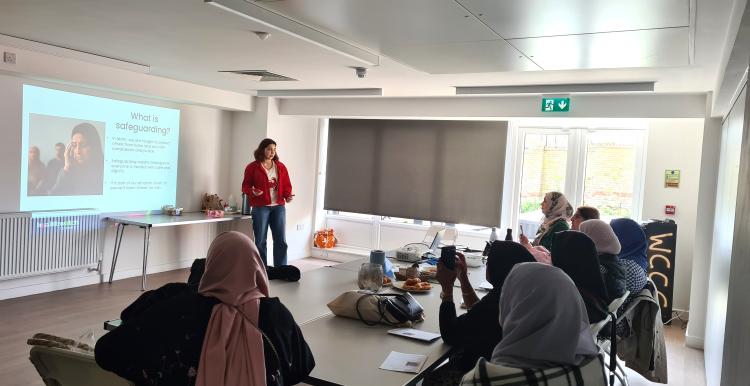Prevention starts with listening: Insights from our community safeguarding work

Prevention starts with plain language
In our conversations with community and faith groups, the same pattern comes up-people rarely use the word safeguarding. Instead, they describe situations that carry real risk of abuse. A mother may talk about “keeping the peace” at home, or an older resident quietly mentions that their pension is “managed” by a relative. What we learn from these discussions is the importance of language. When we as a community use clear, accessible language, it can help people connect their own experiences and recognise when to seek help.
Safety grows from trust
People open up about their experiences only when they believe they’ll be heard. Creating that confidence doesn’t come from formal conversations or simply following a protocol; it comes from building relationships in a supportive environment. Across the communities we have worked with, we’ve seen that continuity and reliability matter as much as professional expertise. When residents see a familiar, respectful listener, someone who returns, remembers, and follows up, conversations become entrusted. That trust can turn a passing interaction into an opportunity for prevention.
Tailoring safeguarding to culture shapes confidence
How people understand safety and care is shaped by culture, faith, and lived experience.
Safeguarding messages that reflect those realities feel relevant and empowering; those that ignore them often feel imposed or stigmatising. When conversations draw on familiar values such as protection, justice, family or wellbeing, people see safeguarding as part of community life, not an external system.
Prevention protects networks, not just individuals
Safeguarding is often talked about in terms of individuals, yet harm rarely exists in isolation. It ripples through families, friendships, and neighbourhoods. We’ve seen that when carers, relatives and informal networks are included early, solutions are more realistic and prevention more sustainable. Through our engagement and feedback, we have helped reinforce the need for a “whole family” approach to safeguarding, taking into consideration how decisions affect the network around the person at risk.
What this means for partners
Procedures matter, but they only work when people trust the environment they’re used in.
-
embedding plain, culturally relevant language in every communication;
-
investing in the community spaces where relationships form;
-
involving carers, families, and local networks as active partners in prevention; and
-
recognising listening and feedback as core elements of prevention.


